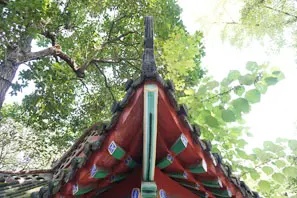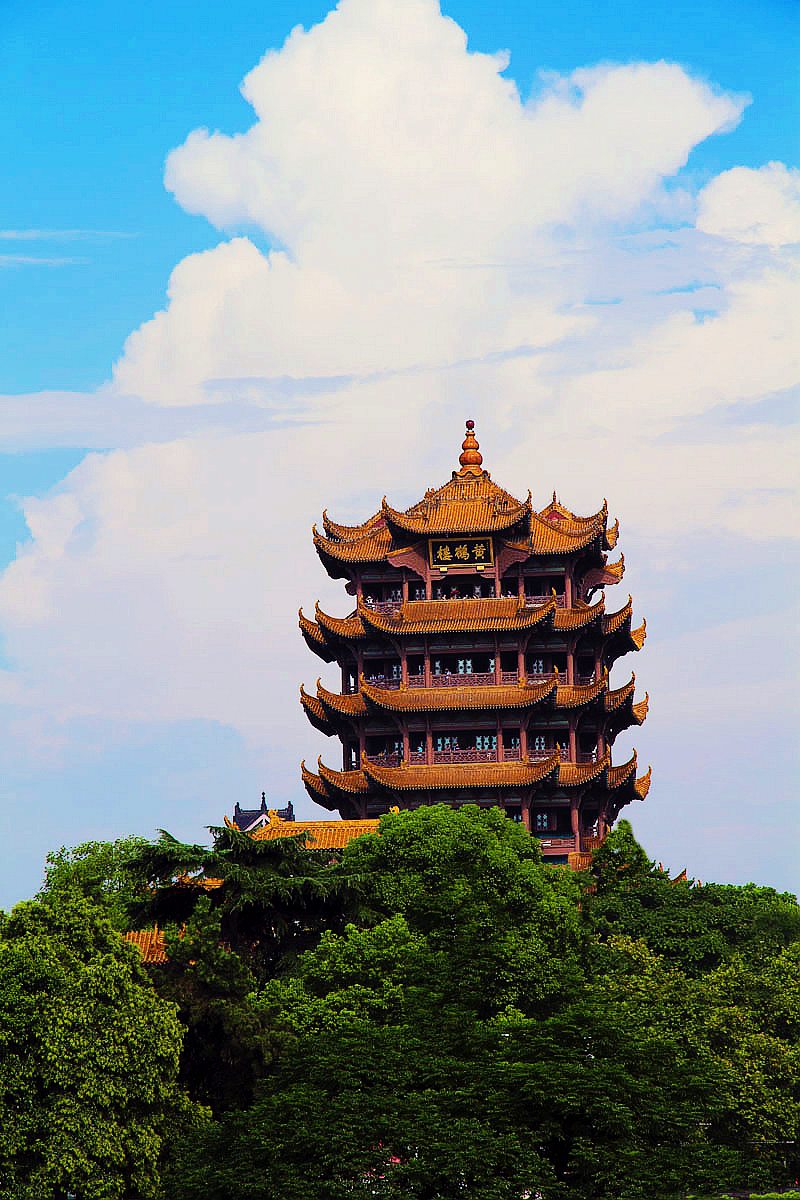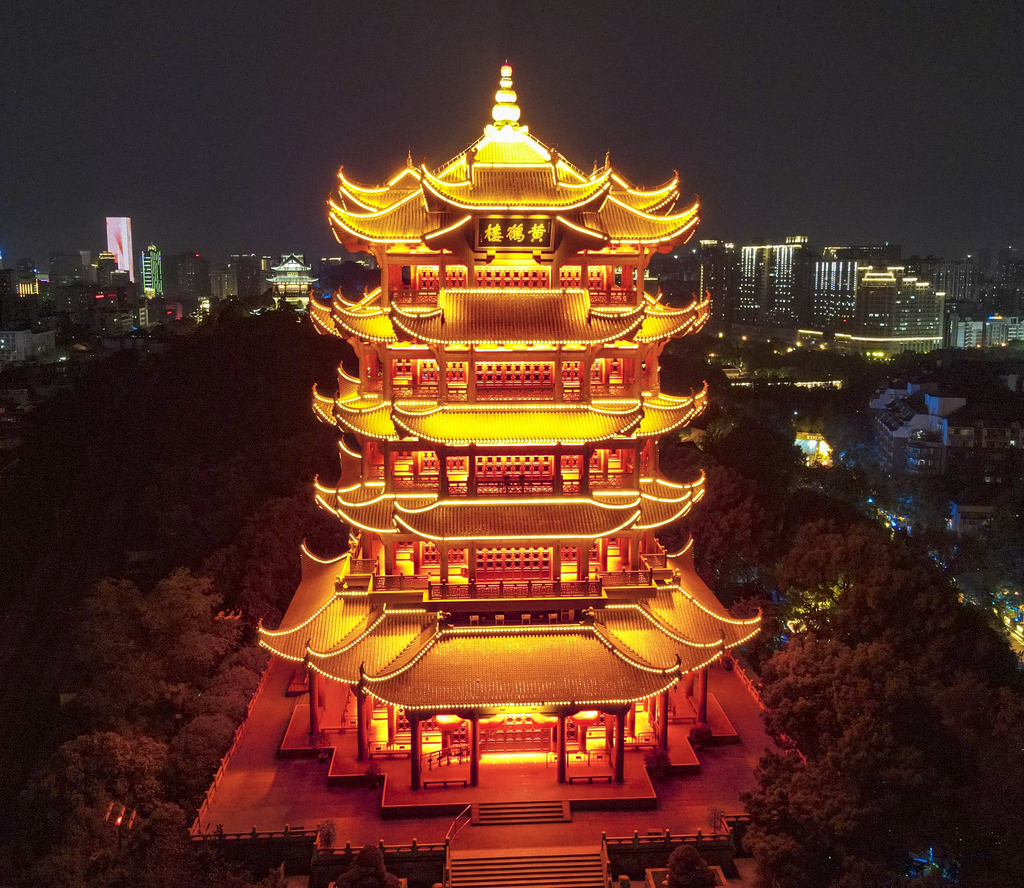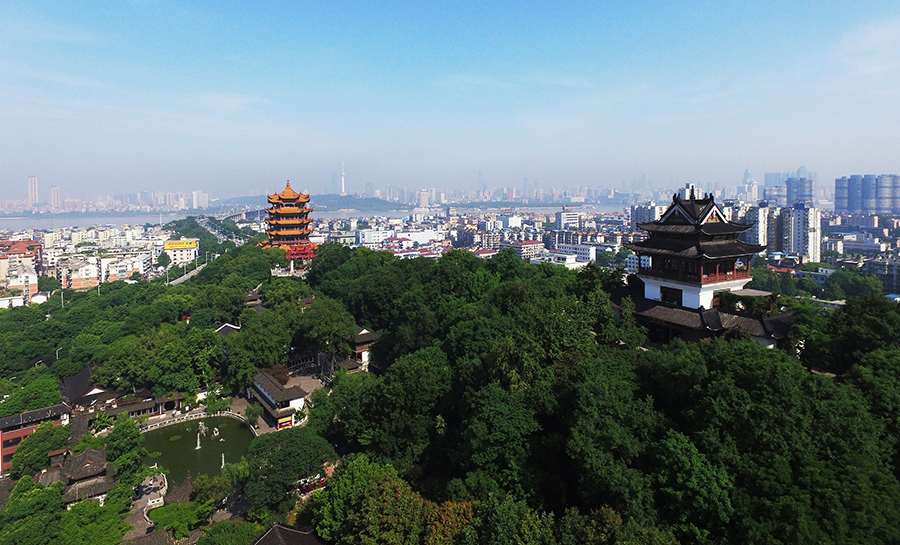Huanghe Tower, located in Wuhan, Hubei Province, is one of China's most iconic historical landmarks and a must-visit destination for travelers seeking a blend of cultural heritage and natural beauty. Huanghe Tower has captivated visitors for centuries with its architectural elegance, poetic legacy, and breathtaking views of the Yangtze River.
Highlights of Yellow Crane Tower
Historical and Cultural Significance
Built during the Three Kingdoms Period (223 AD), Yellow Crane Tower was originally constructed for military purposes but later evolved into a cultural symbol. It gained fame during the Tang Dynasty when poet Cui Hao penned the immortal poem "Huanghe Tower", which begins with the line, "The immortal has flown away on the yellow crane, leaving only the Yellow Crane Tower behind." This poem cemented the tower's place in Chinese literary history.
The tower has been destroyed and rebuilt multiple times, with the current structure dating back to 1985. It stands 51.4 meters tall and features five floors, each showcasing intricate wooden carvings, calligraphy, and historical artifacts.
 |
 |
| Flying Eave | Huanghe Tower |
Architectural Marvel
The tower’s design is a masterpiece of traditional Chinese architecture, with its flying eaves, and Ruyi dougong bracket system. The exterior is adorned with yellow tiles, red pillars, and green glazed tiles, creating a striking visual contrast.
Inside, visitors can explore exhibits of ancient poetry, paintings, and calligraphy, including a replica of Cui Hao's famous poem.
 |
 |
| Huanghe Tower | Snake Hill |
Scenic Views
Perched on Snake Hill, the tower offers panoramic views of the Yangtze River, Wuhan Yangtze River Bridge, and the city skyline. The sight of the river flowing beneath the tower, especially during sunrise or sunset, is truly mesmerizing.
Since 2020, the "Night at Huanghe Tower" project has transformed the site into a magical nighttime destination. Using digital technology, light shows, and live performances, the project brings ancient legends to life.
Spring (March–May): Mild weather and blooming flowers make this season ideal for exploring the tower and its surroundings.
Autumn (September–November): Clear skies and golden foliage enhance the views of the Yangtze River and create a picturesque setting.
Avoid Summer (June–August): High temperatures and humidity can make outdoor activities less enjoyable, though the nighttime light shows are still worth experiencing.
Best Time to Visit
Travel Tips
Getting There
By Metro: Take Line 5 to Simaqiao Station and walk 10 minutes to the tower.
By Bus: Multiple bus routes (10, 61, 401, etc.) stop near the tower.
Ticketing
Entrance Fee: CNY70 (adults), with discounts for students and seniors.
Night Show Ticket: CNY120 (adults), available from 7:00 PM to 9:00 PM.
What to Bring
Comfortable walking shoes for exploring the tower and its grounds.
A camera to capture the stunning views and light shows.




































